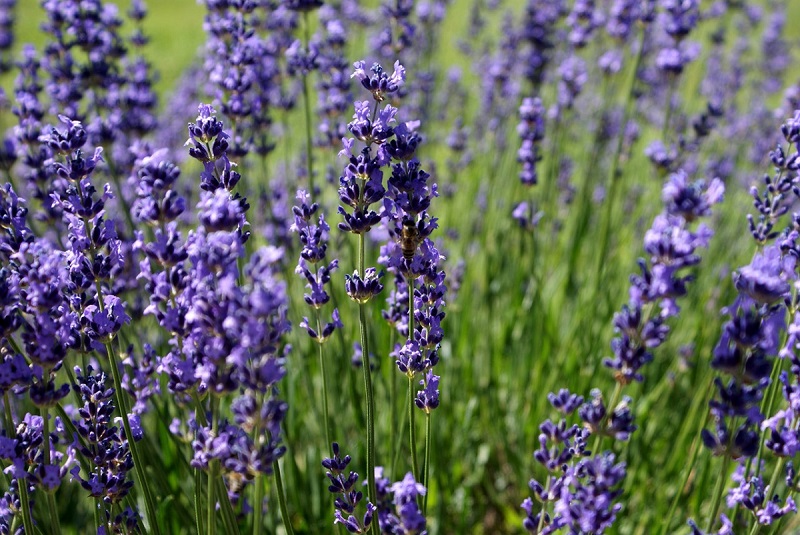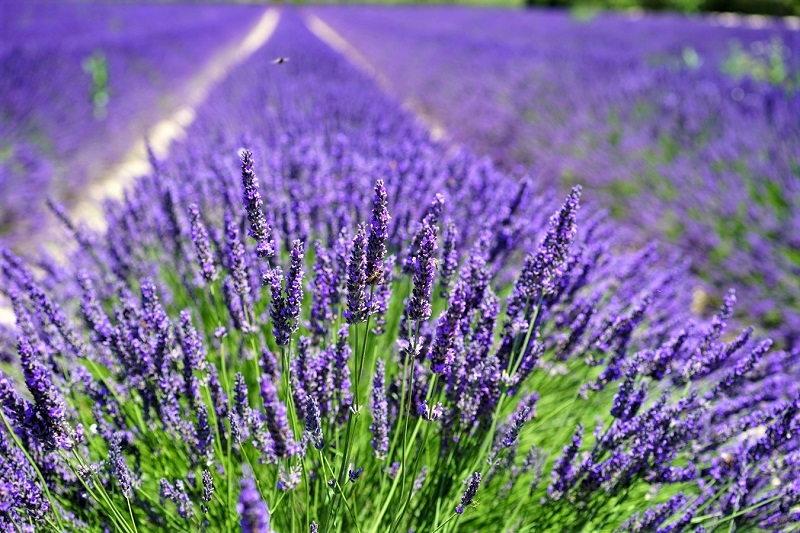Some years ago, researchers from the University of Sussex set out to learn which summer flowering plants are the most attractive to bees. The study involved 32 popular garden flowers planted in several experimental gardens around the campus.
By the time they ended the experiment two years later, the researchers discovered what countless gardeners already knew. Bees get a buzz from lavenders.
People like lavender, too. We’ve been using this violet-capped herb for thousands of years. The ancient Greeks used lavender to fight insomnia and back aches. Mary is said to have washed the feet of Jesus with lavender ointment.
Google “lavender” today and the results will hint at a likely reason for our still lingering fascination for the plant. The results will yield entries with the words “tranquility,” “calm,” “relaxation,” and “serenity.” Apart from its purported healing powers, the clean-smelling lavender apparently reduces stress and anxiety.

Growing Your Own Lavender
Contents
You can plant a new evergreen lavender shrub any time after the last spring frost until fall. However, lavender planted in late summer or fall requires at least two months to establish before the first frost. Check the plant labels or cultivar descriptions online before buying if you want to leave the plant outside over winter.
In any case, any new lavender shrubs planted in summer or autumn won’t begin to flower until the following summer. But the interval allows them time to develop more robust root systems.
Here is how to grow evergreen lavender in your backyard.
Preparing the Site
Test and prepare the soil in spring or early summer for late summer or fall planting. Lavender prefers to grow in a free-draining garden bed that receives six hours of sun a day. The plant requires a 6.5 to 7.5 pH. If necessary, add lime to the planting bed to raise the pH or sulfur to lower it. Follow the amounts recommended from testing.
Spread a two-inch layer of compost over the bed with the lime or sulfur. Use a spade or a tiller to work the compost and amendments into the top eight inches of the planting bed.

Planting Lavender
Dig a hole as deep as the lavender plant’s root ball and twice as wide. If you are planting multiple lavender shrubs, allow 18 inches of space between planting holes on all sides. Once done, gently remove the plant from its nursery pot and set it in the hole. The plant should be at the same depth in the bed as it was planted in the container.
Fill the hole half-full with soil. Water lightly to settle the soil around the roots. Finish filling the hole with soil and water a second time. Make sure the soil around the root zone is evenly moist but not soggy.
Water your newly planted lavender regularly throughout its first summer. Once the plant is well- established, lavender is drought tolerant and will rarely need watering when grown in the ground. Still, supply the plant with enough water during prolonged dry spells.

Harvesting, Care, and Maintenance
You can harvest lavender stems when about half the flower buds have opened. Harvest in the morning when its oils are the most concentrated. Cut the stems as long as possible. Gather them into bundles and secure with rubber bands.
Otherwise, snip off spent blooms to encourage more to form. You can also leave them be towards the end of the flowering season. Birds will frequent your garden for the seeds.
Too keep your plants compact and attractive, it’s best to trim them annually in late summer, just after they flower. Remove any spent flower stalks and about an inch of leaf growth. You can clip the foliage in spring if the plant’s growth is untidy or frost-damaged.

Are you ready to grow your own lavender?








